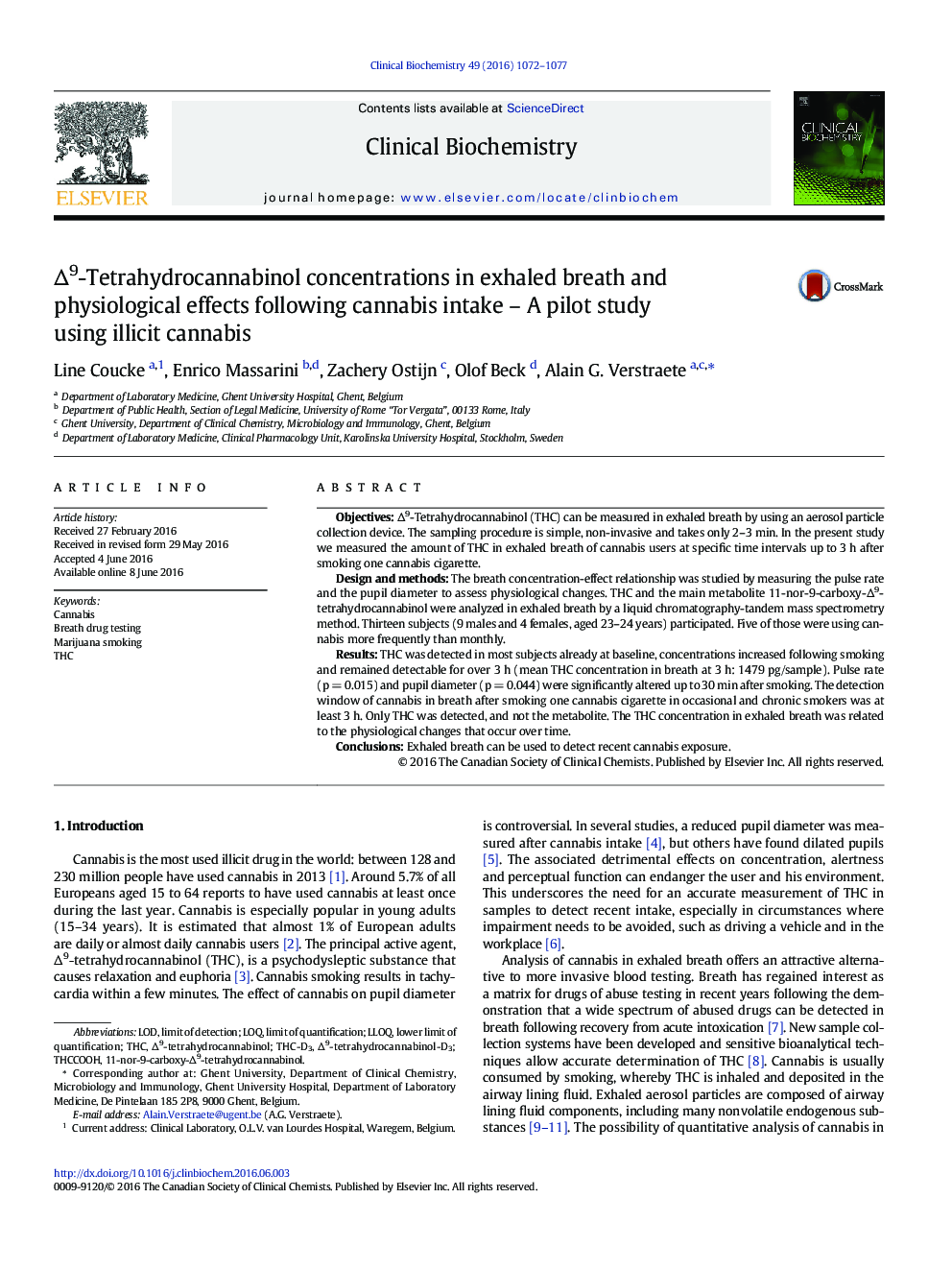| Article ID | Journal | Published Year | Pages | File Type |
|---|---|---|---|---|
| 1968448 | Clinical Biochemistry | 2016 | 6 Pages |
•THC breath concentration was higher than before smoking for up to 120 min•Breath THC remained detectable for at least 3 h after smoking in all participants•The pulse rate was increased and the pupil diameter decreased for 30 minutes after smoking•There was a high inter-individual variability in the breath THC concentrations•The presence of THC in the samples before smoking needs to be investigated further
ObjectivesΔ9-Tetrahydrocannabinol (THC) can be measured in exhaled breath by using an aerosol particle collection device. The sampling procedure is simple, non-invasive and takes only 2–3 min. In the present study we measured the amount of THC in exhaled breath of cannabis users at specific time intervals up to 3 h after smoking one cannabis cigarette.Design and methodsThe breath concentration-effect relationship was studied by measuring the pulse rate and the pupil diameter to assess physiological changes. THC and the main metabolite 11-nor-9-carboxy-Δ9-tetrahydrocannabinol were analyzed in exhaled breath by a liquid chromatography-tandem mass spectrometry method. Thirteen subjects (9 males and 4 females, aged 23–24 years) participated. Five of those were using cannabis more frequently than monthly.ResultsTHC was detected in most subjects already at baseline, concentrations increased following smoking and remained detectable for over 3 h (mean THC concentration in breath at 3 h: 1479 pg/sample). Pulse rate (p = 0.015) and pupil diameter (p = 0.044) were significantly altered up to 30 min after smoking. The detection window of cannabis in breath after smoking one cannabis cigarette in occasional and chronic smokers was at least 3 h. Only THC was detected, and not the metabolite. The THC concentration in exhaled breath was related to the physiological changes that occur over time.ConclusionsExhaled breath can be used to detect recent cannabis exposure.
Graphical abstractFigure optionsDownload full-size imageDownload as PowerPoint slide
